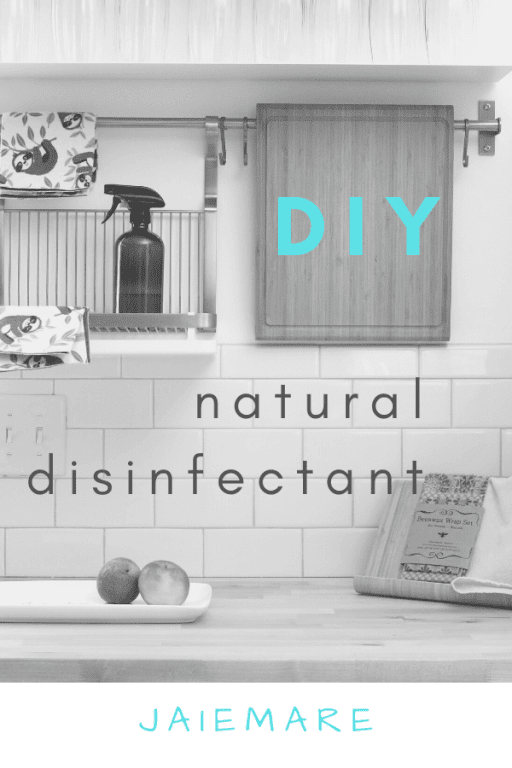DIY NATURAL DISINFECTANT

Don’t get caught up in the crossfire of individuals hoarding household disinfectant products at the grocery store and online price gouging during cold and flu seasons, epidemics, and pandemics by making your own DIY natural disinfectant.
Going DIY saves money and is suitable for the environment, which means less time spent buying multiple cleaning products.
Using one to two DIY multi-use cleaning products saves you shelf space and money.
Compared to store brand household cleaners, you know the ingredients in your natural disinfectant cleaner because, well you made it.
Commercial Brands vs Homemade Cleaning Products
While commercial brands provide a list of ingredients on the cleaning products, you would be shocked at how toxic popular cleaners used every day are bad for your health not listed on the label or hidden under the label “fragrance” due to weak regulation of chemicals.
If you’re concerned about some of the commercial products sitting on your shelf, visit the Environmental Working Group’s website and review their Guide to Healthy Living and product ratings.
Avoid the shopping chaos of long lines and empty shelves, during the cold and flu season.
Try this DIY natural disinfectant using two to three ingredients already sitting on a dusty shelf at home begging for some attention consisting of isopropyl alcohol, distilled water, and optional essential oils.
If you don’t have isopropyl alcohol on hand, before reaching for that bottle of vodka or whiskey, check the alcohol percentage.
An alcohol solution of 60% or more is effective against bacteria, fungi, and viruses.
Natural Disinfectant Recipe
Ingredients
- Isopropyl Alcohol 70% or higher
- Distilled or filtered water
- 16-ounce glass spray bottle
- Essential oils (tea tree, peppermint, orange)
Directions
Use a funnel to pour equal parts of alcohol and water in a 16-ounce glass spray bottle.
To mask the isopropyl alcohol smell, add 10-15 drops of your favorite essential oil or blend.
Tea tree is a good one due to antibacterial, antiviral, and antimicrobial properties has a medicinal smell that isn’t appealing scent wise to everyone, but tea tree essential oil does the job done in the warding off germs.
Why not give an orange and tea tree blend a try?
Disinfecting Essential Oils
Not all essential oils are created equal.
Certain essential oils, especially brands that use synthetic ingredients, can trigger an adverse reaction in the respiratory tract or skin breakouts.
If you or members of your household suffers from asthma, talk to a healthcare professional about the use of essential oils.
Look for 100% pure on the product label that is antiviral and germ-killing or just exclude from the recipe.
Don’t be afraid to contact the company directly and ask for clarication about the product ingredients., especially if the term ‘fragrance’ is listed.
Here is a listing of disinfecting essential oils to choose your unique blend.
After cleaning, spray the natural disinfectant on countertops, toilet seats, telephones, and doorknobs. No need to wipe.
Be careful where you store isopropyl alcohol as it is highly flammable.
Limit the use to small surfaces and ensure the area is well ventilated by cracking a window.
Additional Alcohol Isopropyl Uses
Another use of alcohol isopropyl is making homemade hand sanitizer. Of course, nothing beats washing for 20 seconds and singing ‘Happy Birthday’ to yourself.
I keep a small bottle of sanitizer around for when I am traveling, sightseeing, and using public transportation in places where soap and water aren’t readily available.
Once you start making homemade cleaning products, you will forget about buying store brand products.
Check out my post, GIY House Cleaning Secrets for more tips and ideas on incorporating sustainable green living habits into your daily life.
